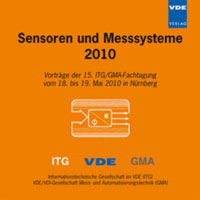Development of a sensor system for determination of an absolute pose of the 6-DOF Hexapod of the biped robot Centaurob
Conference: Sensoren und Messsysteme 2010 - 15. ITG/GMA-Fachtagung
05/18/2010 - 05/19/2010 at Nürnberg
Proceedings: Sensoren und Messsysteme 2010
Pages: 8Language: englishTyp: PDF
Personal VDE Members are entitled to a 10% discount on this title
Authors:
Tesfu, Mekonnen Tesfay; Schlattmann, Josef (Hamburg University of Technology, Hamburg, Germany)
Abstract:
The forward kinematic problem of parallel mechanisms in general and Hexapods in particular result in a highly nonlinear, high-order system of equations, from which the pose of a machine cannot be computed in hard real time deterministically. Moreover, because of limited workspace in parallel machines, it is in most cases inconvenient or impossible to integrate absolute sensors at control joints. Absolute sensors are required for determining the pose without a need for complex calibration process at the start of every operation. Another critical issue in determining machine pose from a system of sensors is the overall accuracy. This paper aims at developing a sensor system module that would allow an accurate, absolute, and deterministic pose determination of a 6-DOF parallel mechanism in real time. The sensor system involves a measurement of passive and active joint axes (involving both angles and displacements). As part of the sensor system module, a new measurement approach based on MEMS accelerometers is used for determining the two angles of a Cardan joint using a single dual-axis sensor package. This leads to the reduction of the number of sensors required. In addition, it solves the usual space problem at Cardan joints. The sensor system is developed for a two legged walking robot Centaurob. The system is, however, meant to be adaptable for any 6-DOF parallel mechanism. The working principles employed can also be used in serial kinematic machines. The sensor system is to be constructed from state of the art sensors in the market.


